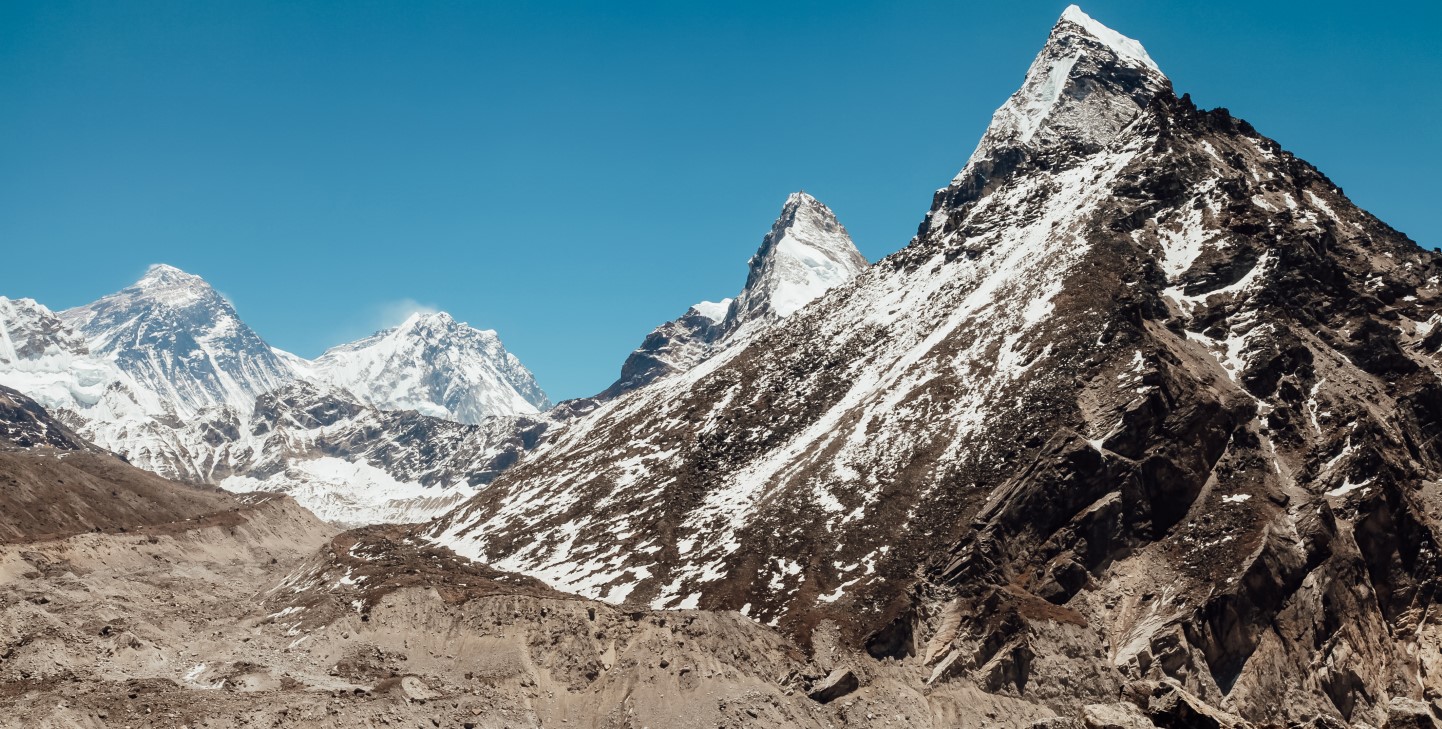Discover Raja Ampat, Indonesia's diving paradise in the Coral Triangle. Explore rich marine life, pristine waters and unique dive sites like Misool and Cape Kri.
GVI
Posted: July 10, 2024

Petrina Darrah
Posted: May 19, 2023
Nepal is a country that is renowned for its diverse natural beauty, friendly people, and cultural richness. It is a popular destination for trekking and climbing enthusiasts from all over the world, thanks to its towering peaks and spectacular landscapes. Peak climbing in Nepal is a challenging but highly rewarding adventure that offers a unique opportunity to experience the stunning Himalayan vistas, conquer the highest peaks, and immerse yourself in the local culture. In this article, we’ll explore some of the most popular peaks for climbing in Nepal, provide an overview of the history and regulations of peak climbing, and offer tips for preparation and training.
Nepal is home to eight of the world’s ten highest peaks, including Mount Everest, which stands at 8,848 metres (29,029 feet). Peak climbing in Nepal has a rich history, with the first successful ascent of Everest in 1953 by Sir Edmund Hillary and Tenzing Norgay. Since then, Nepal has become a popular destination for climbing enthusiasts from all over the world, offering a wide range of peaks that cater to different skill levels and interests.
There are three types of peaks in Nepal: trekking peaks, expedition peaks, and restricted peaks. Trekking peaks are those that can be climbed without the need for technical climbing skills, making them accessible to novice climbers. Expedition peaks are those that require advanced mountaineering skills and are typically attempted by experienced climbers with a support team. Restricted peaks are those that are located in restricted areas and require special permits to climb.
To climb any peak in Nepal, climbers need to obtain a permit from the government. The cost of the permit varies depending on the peak and the season. In addition to the permit, climbers also need to follow a set of regulations, such as hiring a licensed guide and porter, carrying out their waste, and respecting the local culture and traditions.
Nepal has numerous peaks that offer different levels of difficulty and challenge. Here are some of the most popular peaks for climbing in Nepal:
Island Peak, also known as Imja Tse, is one of the most popular trekking peaks in Nepal. It stands at 6,189 metres (20,305 feet) and is located in the Khumbu region of Nepal. Island Peak offers a relatively straightforward climb, with some basic technical sections that require the use of ropes and crampons. The peak is surrounded by stunning Himalayan vistas and offers a unique opportunity to experience the Sherpa culture.

Mera Peak is the highest trekking peak in Nepal, standing at 6,476 metres (21,247 feet). Located in the Everest region, Mera Peak offers a challenging climb that requires good physical fitness and some basic mountaineering skills. The climb to the summit of Mera Peak offers breathtaking views of the surrounding mountains, including Everest, Lhotse, Makalu, and Cho Oyu.
Lobuche East is a popular expedition peak in Nepal, standing at 6,119 metres (20,075 feet). Located in the Khumbu region, Lobuche East offers a challenging climb that requires advanced mountaineering skills and technical expertise. The peak offers stunning views of the Khumbu Glacier and the surrounding Himalayan peaks.
Pisang Peak is a popular trekking peak in the Annapurna region of Nepal, standing at 6,091 metres (19,984 feet). The peak offers a relatively straightforward climb, with some basic technical sections that require the use of ropes and crampons. Pisang Peak offers breathtaking views of the Annapurna range, including Annapurna II, Annapurna III, and Gangapurna.
Peak climbing in Nepal requires good physical fitness, endurance, and some basic mountaineering skills. Here are some tips for preparation and training:
If you’re looking for a unique way to experience trekking in Nepal while also making a positive impact, volunteering with GVI could be the perfect opportunity for you. As a volunteer with GVI, you’ll have the opportunity to work on community development or conservation projects during the day and go trekking in your free time.
GVI’s Nepal trekking expeditions take you through the stunning landscapes of the Annapurna region, offering views of majestic peaks and traditional villages. The expeditions are led by experienced local guides who will take you on a journey through the beautiful trails while providing valuable insights into the culture and history of the region.
Volunteering with GVI also allows you to make a positive impact on the local communities. GVI’s community development projects in Nepal focus on education and women’s empowerment. As a volunteer, you’ll have the opportunity to work with local teachers to improve English language skills or work with local women’s groups to help develop sustainable income-generating activities.
Peak climbing in Nepal offers a unique opportunity to experience the stunning Himalayan landscapes, conquer the highest peaks, and immerse yourself in the local culture. With a rich history and a wide range of peaks to choose from, Nepal is a popular destination for climbing enthusiasts from all over the world. However, climbing in Nepal requires good physical fitness, endurance, and some basic mountaineering skills. With proper preparation and training, peak climbing in Nepal can be a truly unforgettable adventure of a lifetime.
By Petrina Darrah

Discover Raja Ampat, Indonesia's diving paradise in the Coral Triangle. Explore rich marine life, pristine waters and unique dive sites like Misool and Cape Kri.
GVI
Posted: July 10, 2024